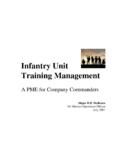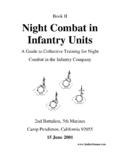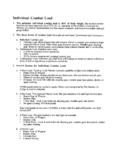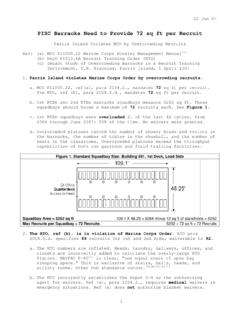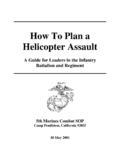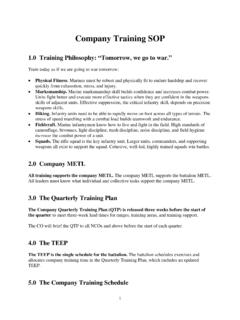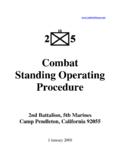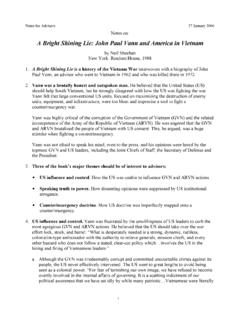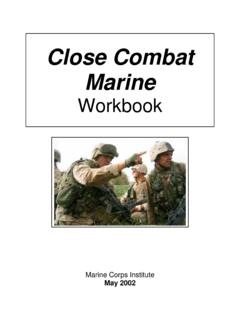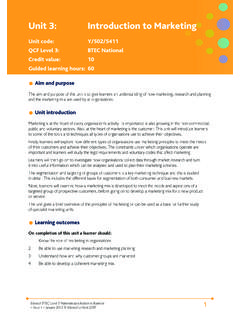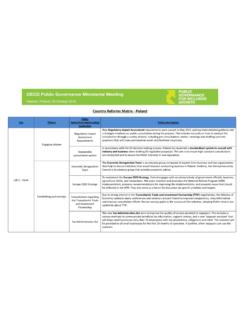Transcription of Improving Unit Cohesion - Advisor Home
1 Improving unit Cohesion : The First Step in Improving Marine Corps Infantry Battalion Capabilities by Major Brendan B. McBreen USMC In partial fulfillment of the requirements for The Commandant of the Marine Corps National Fellowship Program 23 May 2002 Improving unit Cohesion ii Executive Summary Of all the ideas for Improving the combat capabilities of Marine Corps infantry battalions, only one really matters. Improving the stability and Cohesion of our units is a prerequisite for all other improvements. Improving the Cohesion of our units supports and maximizes the effectiveness of all other improvements.
2 The future Marine Corps requires more capable infantry units. Cohesion is the first and most effective answer. In combat, men fight for their comrades. The primary group motivates men. Cohesion is the bonds of trust between members of a group. There are four types of Cohesion : horizontal Cohesion among peers, vertical Cohesion from subordinate to leader, organizational Cohesion within an army, and societal Cohesion between an army and its society. Cohesive units fight better, suffer fewer casualties, train better, do not disintegrate, require less support, and provide members with a higher quality of life.
3 Cohesion s central requirement is personnel stability. Stability, stress, and success build horizontal Cohesion in units. Leaders who understand their men build vertical Cohesion . Horizontal Cohesion between leaders is built on shared experiences. Vertical Cohesion between leaders is built on clear standards. Organizational Cohesion is built on history and traditions. Competence and honesty between the army and its society build societal Cohesion . Cohesion is difficult to measure, but familiarity can be measured for both small units and leaders. Reconstitution is a technique for maintaining stability by transferring personnel only at the beginning and end of long training cycles.
4 Marine Corps Order , which defines the current Cohesion program, only applies to new Marines. Officers and non-commissioned officers join battalions at various times. unit commanders serve short tours. Training is not harmonized with the cycle. The Marine Corps needs to update the order to mandate four-year assignments for officers, non-commissioned officers, and new Marines. The Marine Corps needs to implement reconstitution windows, periods when all Marines in the battalion transfer in or out, at the beginning and end of each two-year reconstitution cycle. The stability index of each unit should be part of readiness reports.
5 Units should be overfilled at the beginning of each training cycle. Supporting organizations should publish training guidance, tour lengths, and manuals to explain the techniques of Cohesion and reconstitution. The Ground Combat Element Advocate should represent the operating forces and coordinate Cohesion efforts. Cohesion is more important now than at any time in our past. The challenges of the future can best be met by strengthening our infantry units. Significant improvements to infantry units will come primarily from increasing unit stability and Cohesion . Improving unit Cohesion iii Table of Contents Title Page i Executive Summary ii Table of Contents iii Part I: The Challenge of the New Century Premise 1 The New World 1 Challenges for the Marine Corps 2 What is Needed?
6 2 Part II: Cohesion and Reconstitution Cohesion 4 Why do Men Fight? 4 What is Cohesion ? 5 Why is Cohesion Important?
7 6 How is Cohesion Built? 11 How is Cohesion Measured? 17 Reconstitution 23 Three Models 23 The Benefits of Reconstitution
8 25 Part III. Cohesion and the Future Marine Corps Infantry Battalion Cohesion and the Marine Corps Infantry Battalion As-It-Is 27 The Marine Corps Cohesion Program 27 Infantry Battalion Cohesion Strengths and Weaknesses 28 Improving unit Cohesion iv Cohesion and the Marine Corps Infantry
9 Battalion As-It-Will-Be 31 What is To Be Done? 31 Why is Cohesion More Important Now? 34 Conclusion 36 Appendices A. Works Cited A-1 B. Additional References B-1 C.
10 Glossary C-1 D. Arguments Against Cohesion D-1 List of Tables 5-1 unit Familiarity Index 19 5-2 Example unit Familiarity Index 20 5-3 Leader Stability Index 21 5-3 Example Leader Stability Index 22 Improving unit Cohesion 1 Part I: The Challenge of the New Century Premise Of all the ideas for Improving the combat capabilities of Marine Corps infantry battalions, only one really matters.
